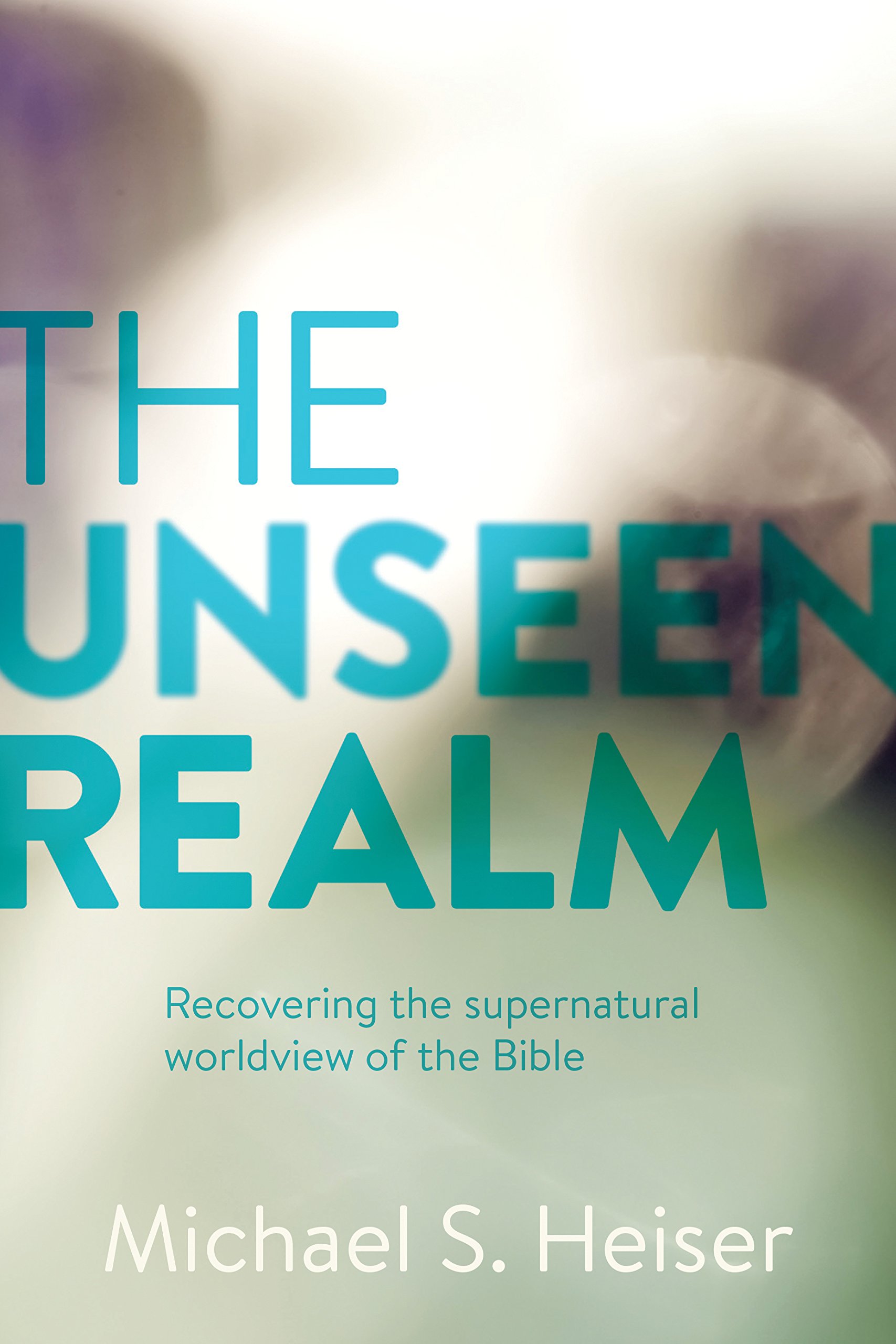A Brief Book Summary from Books at a Glance [Part 1 of 2]
About the Author
Michael S. Heiser is the academic editor for Logos Bible Software, Bible Study Magazine, and Faithlife Study Bible. He is the coeditor of Old Testament Greek Pseudepigrapha with Morphology and Semitic Inscriptions: Analyzed Texts and English Translations; he is also the Hebrew instructor for Learn to Use Hebrew for Logos Bible Software. He earned his PhD in Hebrew Bible and Semitic languages and holds an MA in ancient history and Hebrew studies. In addition, he was named the 2007 Pacific Northwest Regional Scholar by the Society of Biblical Literature.
Overview
“The Unseen Realm presents the fruit of Dr. Heiser’s fifteen years of research into what the Bible really says about the unseen world of the supernatural. His goal is to help readers view the biblical text unfiltered by tradition or by theological presuppositions. In The Unseen Realm, Michael Heiser shines a light on the supernatural world—not a new light, but rather the same light the original, ancient readers—and writers—of Scripture would have seen it in, given their historical and cultural milieu. This light allows today’s pastors and scholars to understand the biblical authors’ supernatural worldview.”
Table of Contents
Part 1: First Things
1.Reading Your Bible Again—for the First Time
2. Rules of Engagement
Part 2: The Households of God
3. God’s Entourage
4. God Alone
5. As in Heaven, So on Earth
6. Gardens and Mountains
7. Eden—Like No Place on Earth
8. Only God Is Perfect
9. Peril and Providence
Part 3: Divine Transgressions
10. Trouble in Paradise
11. Like the Most High?
12. Divine Transgression
13. The Bad Seed
14. Divine Allotment
15. Cosmic Geography
Part 4: Yahweh and His Portion
16. Abraham’s Word
17. Yahweh Visible and Invisible
18. What’s in a Name?
19. Who Is Like Yahweh?
20. Retooling the Template
21. God’s Law, God’s Council
22. Realm Distinction
Part 5: Conquest and Failure
23. Giant Problems
24. The Place of the Serpent
25. Holy War
Part 6: Thus Says The Lord
26. Mountains and Valleys
27. Standing in the Council
28. Divine Misdirection
29. The Rider of the Clouds
30. Prepare to Die
Part 7: The Kingdom Already
31. Who Will God for Us?
32. Preeminent Domain
33. A Beneficial Death
34. Infiltration
35. Son of God, Seed of Abraham
36. Lower Than the Elohim
37. This Means War
38. Choosing Sides
Part 8: The Kingdom Not Yet
39. Final Verdict
40. Foe from the North
41. The Mount of Assembly
42. Describing the Indescribable
Epilogue
Summary
Part 1: First Things
1.Reading Your Bible Again—for the First Time
2. Rules of Engagement
Turning points in life often come in unexpected ways. Reading Psalm 82:1 in Hebrew, very slowly and very carefully, might just be for many evangelicals one of these watershed moments. It says:
God [elohim] stands in the divine assembly;
he administers judgment in the midst of the gods [elohim].
That’s right: God dwells in an assembly, a pantheon, of other gods. Even for someone who has attended seminary, studied Hebrew, read the Bible several times, etc., this can be a startling realization about the theology of the Old Testament.
Ultimately, our failure to reckon with this supernatural picture–not merely a supernatural God in the midst of the nature he created, but a supernatural realm–is a failure to see the text through the eyes of the ancient reader. For the ancients, life was processed in supernatural terms.
We miss uncomfortable truths that make up a supernatural worldview for a few reasons. For one, we filter the text according to modern assumptions. But texts like Psalm 82 break such filters. Also, we tend to impose order, like seeing the big picture of the Bible without recognizing that it is like a mosaic. We must wrestle with the details of the individual pieces of the mosaic in order to make up our big picture.
To cope with these tendencies, we have to approach texts without the all-too-common notion that the history of Christianity is the true context of the Bible. The ancient Near East is the biblical context; the confessions and creeds of the church, however important they are as distillations of biblical truth, can keep us from seeing the pieces of the mosaic in the text itself. Additionally we must recognize the vitality and theological importance of the unseen world, that it forms a crucial part of many key texts of biblical theology. It is those texts in large part which we will be studying.
Part 2: The Households of God
3. God’s Entourage
4. God Alone
5. As in Heaven, So on Earth
6. Gardens and Mountains
7. Eden—Like No Place on Earth
8. Only God Is Perfect
9. Peril and Providence
A question children often pose, “What was there before God made the world?” often stumps even biblically literate adults. “God was there,” though true, doesn’t quite do justice to the biblical picture. Job 38:4-7 is clear that the heavenly host was there and witnessed the act of creation. The sons of God were shouting for joy.
We should be careful dismissing this material as though these beings were merely angels. They have a hierarchy (angel, archangel), they’re referred to as “morning stars,” and, in the ancient conception, they are “divine,” as Psalm 82:6 makes clear. This provides context for the frequent name of God as the “Most High” (Genesis 14:18-22, Numbers 24:16, etc.). There are other “gods,” that is, supernatural powers, but God is. . .
[To continue reading this summary, please see below....]The remainder of this article is premium content. Become a member to continue reading.
Already have an account? Sign In
